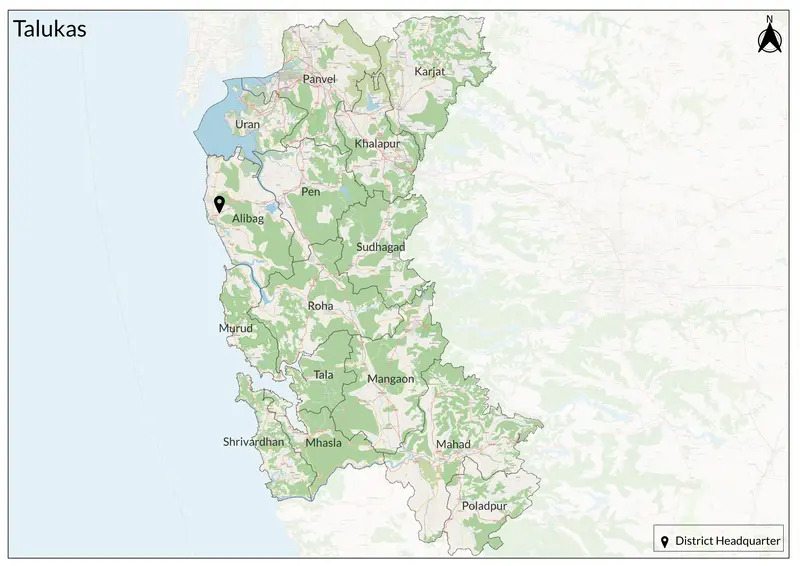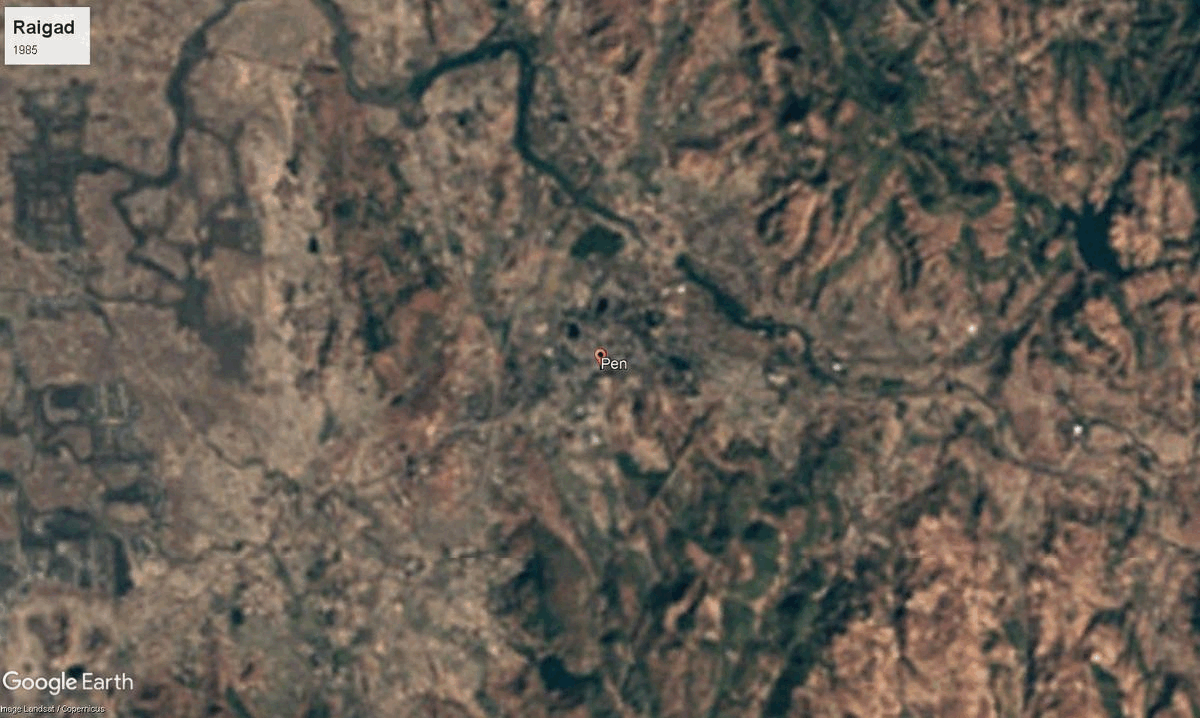Raigad

7,152 sq. km
~28.56 lakh (2019)
959 (2011)
~ ₹60,630 crore (2019)
~ ₹2.12 lakh (2019)
Since India gained independence, Raigad has developed significantly, especially after Maharashtra was formed in 1960. It was previously known as Colaba district before being renamed Raigad. It is part of the Konkan division and is known for its historical, economic, and coastal significance.
Raigad’s culture reflects its maritime and Maratha legacies, celebrated in folk music, dances, local festivals, and fairs. The Mahad Chavdar Tale (Ambedkar’s historic satyagraha), the annual Pola cattle festival, and celebrations of gpds like Ballaleshwar Pali are deeply embedded traditions, as well as the famous Varadvinayak Mandir in Mahad. The region’s culinary fame (fish curries, sol kadhi, and coconut-rich sweets) complements its reputation for traditional weaving, crafts, and performing arts. Multiple religious communities, from the agri-fisherfolk of the coast to temple towns in the interior, create a tapestry of festivals and customs that blend Konkani, Maratha, and cosmopolitan Mumbai influences. Colonial architecture dots many regions, for instance, Matheran. The isle of Elephanta, home to centuries-old Hindu and Buddhist caves, falls within Raigad’s boundaries, reinforcing its status as a blend of natural and historical heritage.
Geographically, Raigad is bounded by the Arabian Sea to the west and the Western Ghats to the east, with rich biodiversity in its forests, mangroves, hills, and marine habitats. The district is famed for beautiful beaches like Alibag, Kashid, and Shrivardhan, as well as historic sea forts such as Murud-Janjira and Korlai. Its hilly, lush landscape features rivers, backwaters in abundance.
Raigad is an important economic and industrial center. Agriculture (rice, mango, coconut) and fishing are traditional economic mainstays of the district. In recent decades, proximity to Mumbai and the rise of port infrastructure (Jawaharlal Nehru Port Trust, the JNPT and other ports) have made Raigad a hub of industry, trade, and logistics. Raighad is also home to Dighi Port Industrial Area, part of the Delhi-Mumbai Industrial Corridor (DMIC), attracting industries like engineering, food processing, and pharmaceuticals. Uran is a key center for fishing, supplying seafood to Mumbai. The Mumbai-Pune Expressway and the Konkan Railway have transformed access, sparked real estate development, and connected Raigad’s towns to urban and export markets. Tourist resorts, eco-lodges, and vineyards supplement local livelihoods. Educational institutions and new technology institutes are also on the rise, drawn by the district’s dynamic growth and stunning setting.
